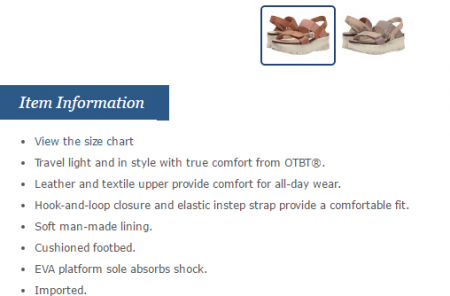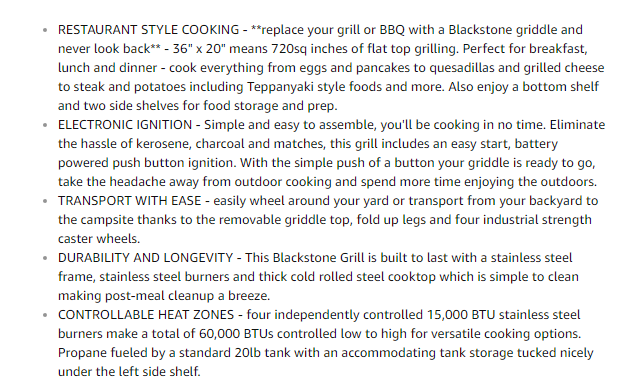When it comes to CRO, you can find a ton of information covering a wide range of topics, from button color to call-to-action copy. But one area where a blind spot exists is product descriptions, which play an important role in the conversion process and should not be overlooked.
Here’s why.
Why Product Descriptions Matter
Product descriptions help customers decide whether or not they want to buy something.
A product description entices customers to buy a product by informing them of the product’s benefits and how it can improve their lives or solve their problems. A product description eases customers’ worries by preemptively answering their questions and addressing their concerns so they feel comfortable clicking that “buy now” button.

When a product description is done well, that is.
A product description also has the ability to completely turn customers off from a product. Or, it can leave customers not caring at all, with yawn-inducing copy that does nothing to actually sell the product.
A common mistake that companies make with their product descriptions is using the “standard product descriptions provided by a manufacturing company or third-party marketing organization,” says Neil Patel. “These are usually brief, bland, uncompelling, and may result in duplicate content.”
Either that or companies often outsource the writing of their product descriptions to writers who don’t have much experience with conversion copywriting.
So how can you enhance your product descriptions so they start generating the conversions you want?
Here are three strategies.
1. Don’t Use “Yeah, yeah” phrases
“Yeah, yeah” phrases are literary padding. You know the kind. When you read something and think, “Sure, everyone says that.”
An example in the context of product descriptions would be a phrase like “top quality product” or saying “you’re sure to love it!” You obviously want your customers to love your product and to know it’s top quality. But bluntly stating it as fact is far less persuasive than describing your product’s technical details along with their benefits in a way that shows your customers how your product can improve their lives or solve their problems.
Zappos is one company that does this consistently well.

Zappos’ product descriptions give the impression of quality without coming out and saying it directly, employing a basic feature + benefit formula for most bullet points.
2. Talk To Customers, Appealing To Their Imagination
A lot of product descriptions are written in such a way that they talk only about the product, which at first might seem like “Well, yeah, of course they should talk about the product!” But you can talk about the product in a way that also includes the customer, making the description feel way more engaging.
Say you sell grills, for example. Instead of describing the grill in terms of its features, such as…
- Restaurant style cooking, including a bottom shelf and two side shelves for food storage and prep
- Simple and easy to assemble, this grill has an electronic ignition
…try talking about the person who’ll actually be using the grill, as in the description for this Blackstone grill griddle station:

Notice phrases like “spend more time enjoying the outdoors” and “easily wheel around your yard” and how the description paints a picture of how the customer can use the grill: “cook everything from eggs and pancakes…” All of this speaks to customers directly, helping them envision how great it would be to actually own this grill.
3. Format Descriptions So They’re Scannable
One critique of the Blackstone grill product description would be that it has large blocks of text that aren’t super scannable. When people shop online, they compare products, which means they’re reading a lot of product descriptions. And too much text bunched together can feel overwhelming.
So make things easier for your customers by following these suggestions:
- Include enticing headlines
- Use bullet points
- Choose a font size that’s large enough to read
- And make sure to add in plenty of white space.
What do you think about these tips to improve your product descriptions? What’s your process for writing product descriptions? Get in touch and let us know!




